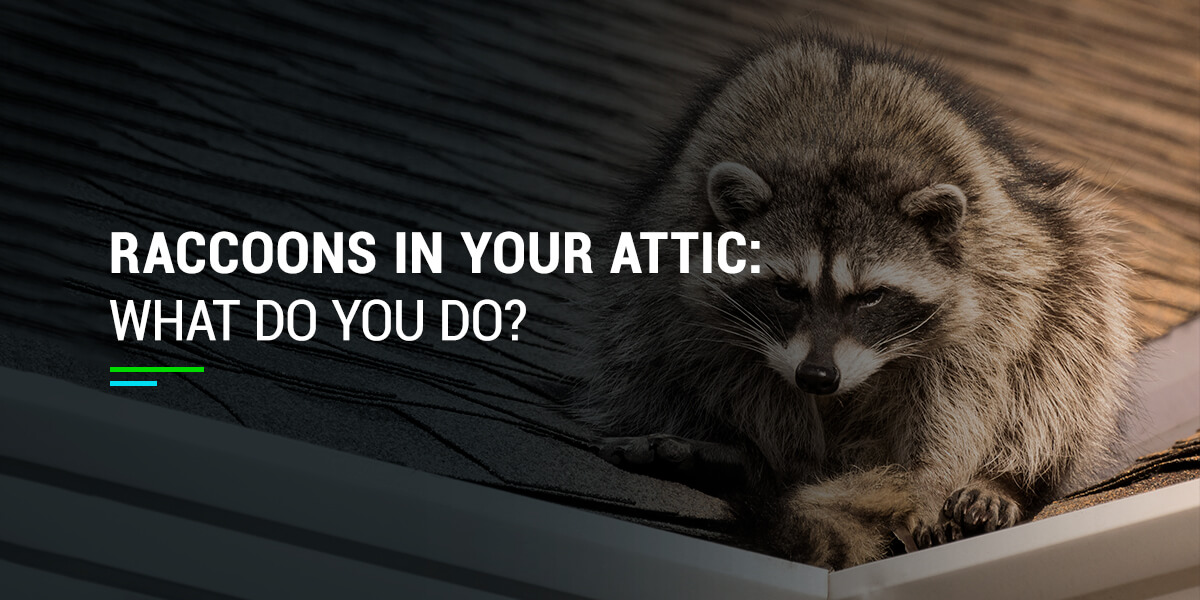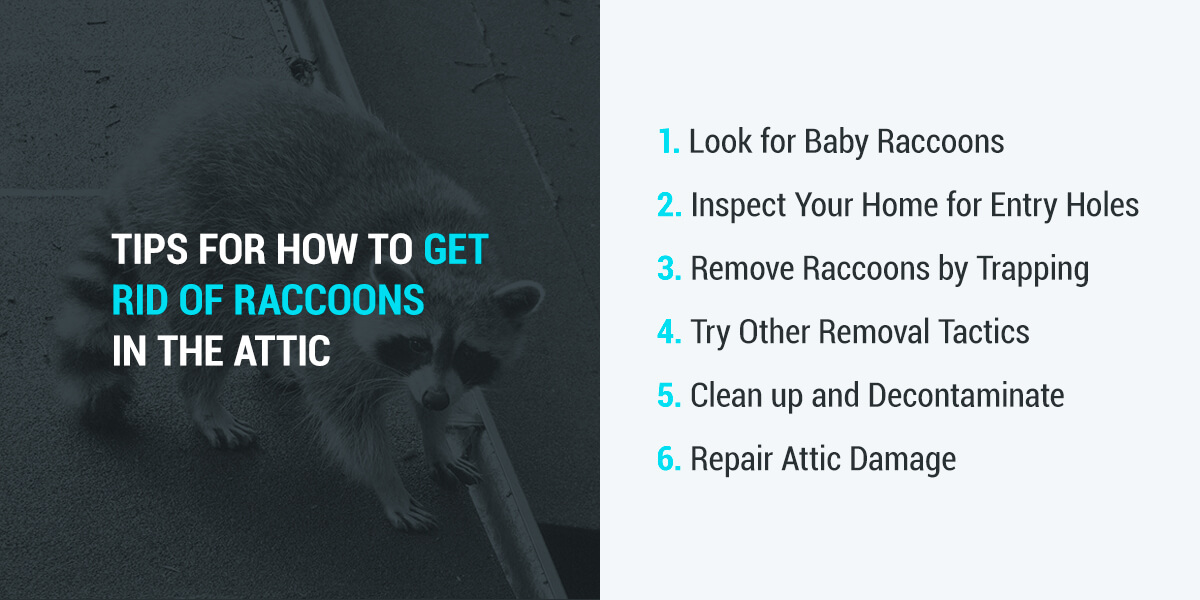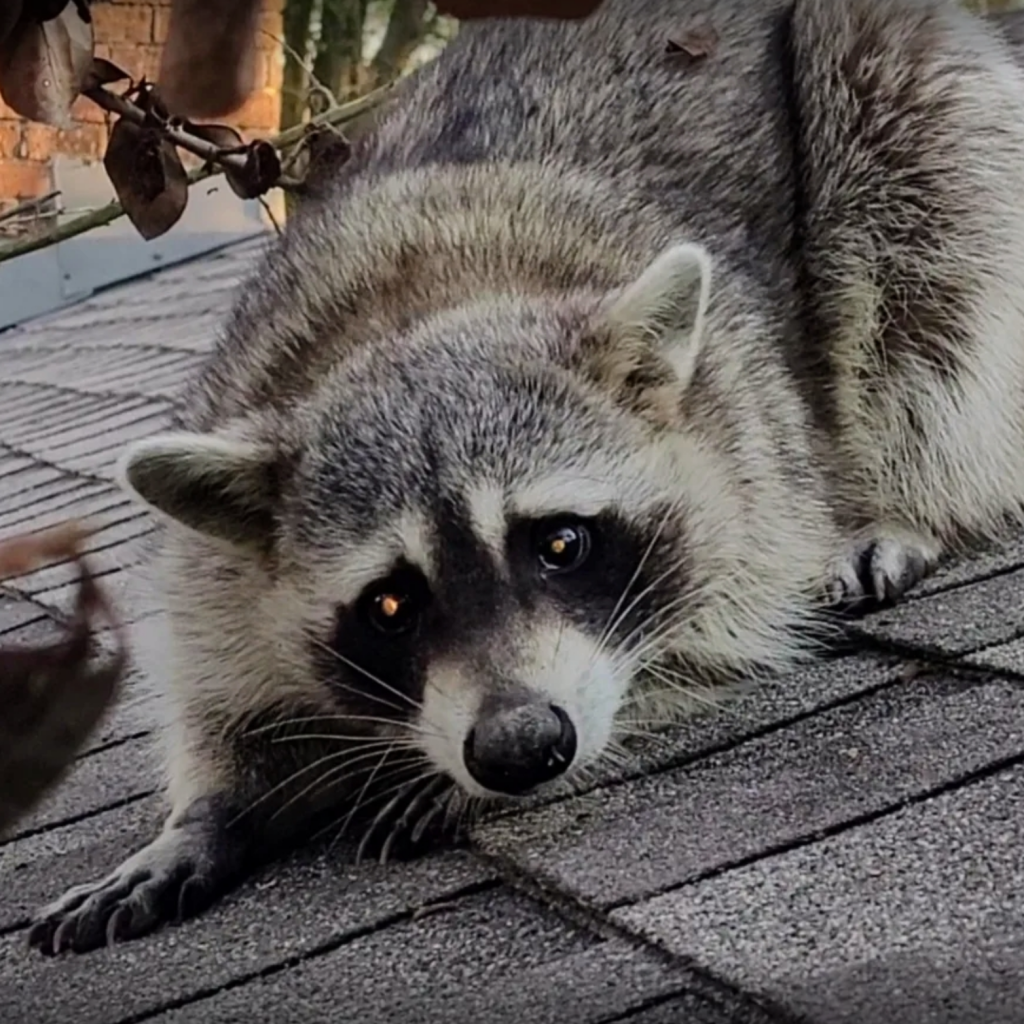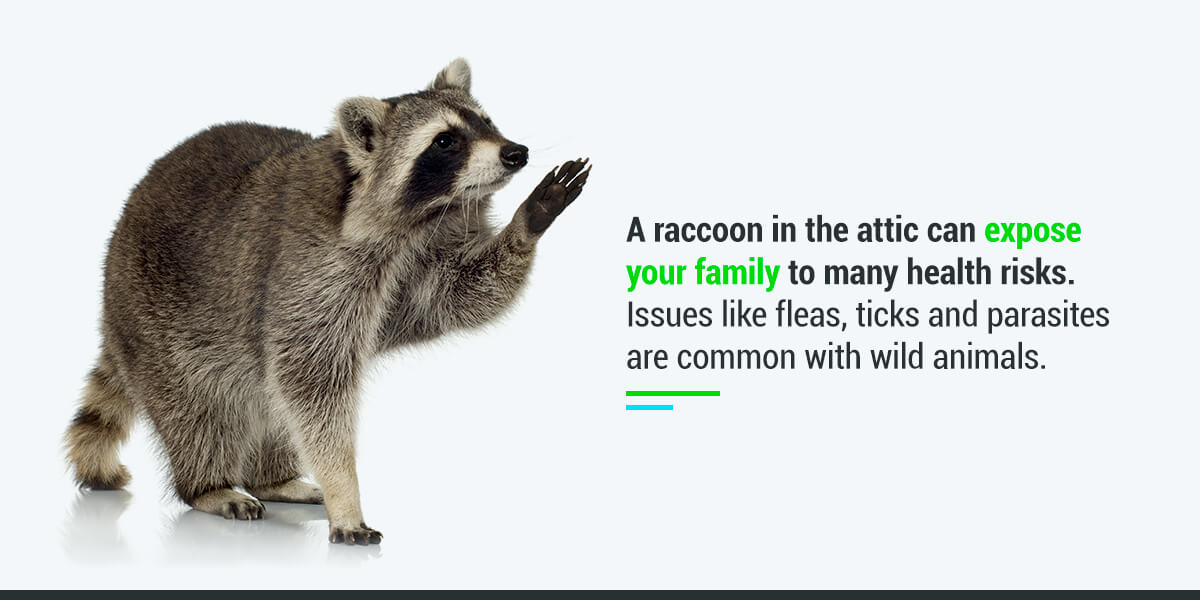Remo

Raccoons in Your Attic: What Do You Do?
Since most animals instinctively seek warmth and shelter, it’s no surprise local wildlife might invite themselves into your home at unexpected times. Having a raccoon in the attic or even in your crawl space is a typical occurrence for many homeowners, and worth taking seriously. There are a few tips and tricks to follow if you want to try to remove the raccoons on your own, or you can call a full-service company to handle the entire process and remove the risk from yourself.
Table of Contents:
- Signs of Raccoons in Your Attic
- Damage Raccoons Can Cause
- What to Do if You Find a Raccoon in Your Home
Signs of Raccoons in Your Attic
While raccoons can be sneaky, there are a few ways to tell if one is living in your attic unwelcomed. These small signs can help you assess whether you have a raccoon problem, and where they might be getting in. Based on the severity of the indications, you can determine whether the raccoons are newcomers or have an established presence.
- Feces inside the attic or on the roof
- Attic noises, including footsteps, snarls, chewing and scratching
- Soffit panels that are out of place or pulled apart
- Pawprints and scratch marks on your home’s woodwork
- Regular sightings of raccoons on the roof or in your yard
- Dust footprints in the attic
- Holes in foundation vents
- Random smears of dirt on the outside of your home
- Large defined trails through insulation in the attic
Damage Raccoons Can Cause in Your Attic
Raccoons will most likely cause extensive damage to crucial parts of your home. How do raccoons get in your attic? They typically enter through the soffit or roof. Roof damage creates an opening that can allow water in and cause mold. Their claws can easily tear through shingles, roof decking, fascia and soffit. Raccoons also ruin HVAC ducts and wooden structures. If they damage wiring, it can create a fire hazard.
In addition, a raccoon in the attic can expose your family to many health risks. Issues like fleas, ticks and parasites are common with wild animals. Raccoon droppings can carry roundworms, other parasites, and a myriad of diseases. Raccoons often have rabies, a contagious illness that can spread to humans. If you have an unwanted raccoon houseguest, be aware of all these potential threats.
Request Raccoon Removal Services ➔

Raccoon Removal From Attic
It can be alarming to discover you have raccoons living in your home, but here are some simple tips for how to get rid of raccoons in the attic.
1. Listen and Look for Baby Raccoons
Usually, mother raccoons will move into your attic because they need a safe, warm place to give birth. In this case, it’s crucial to find and remove the entire family.
Listen and look for the den and the litter of pups. Remaining still and quiet for a few minutes can help locate the babies when they move or make noises. Baby raccoons make noises that are often mistaken for birds chirping in the attic. The den is often tucked away in a hard-to-reach place. Be careful, since a mother raccoon might be defensive over her little ones. Wear protective clothing such as gloves, goggles and boots just in case. Also, try to look for pups when the mother is not around, or if you’ve seen her leaving the attic.
2. Inspect Your Home for Entry Holes
After locating the raccoon family, find their access point, so it can be repaired after removing the infestation. Inspect your home for damage, making a running list of all the necessary materials to fix it. Having these supplies handy after raccoon removal will make it easier to properly repair the entryways quickly.
3. Remove Raccoons by Trapping
When removing the raccoons, start with the litter of pups. Trapping baby raccoons is a safe and humane way to remove them from your attic space. To do so, pick up the pups wearing heavy gloves and gently place them into a box or pillowcase, ensuring they remain unharmed.
When removing the mother, it is best to set a raccoon trap with the pups as live bait. In doing so, the mother and her babies will call out to each other. Placing the pups in the back of a cage is a best practice, but can be tricky without the help of a wildlife removal specialist. Educate yourself on the state and local laws pertaining to raccoon trapping; many states strictly prohibit the transport and relocation of raccoons without proper permits or licensing.
While removing raccoons on your own might sound like an easy task, it rarely is. There is a lot of risk involved. Hiring a specialist to come into your home to locate, remove and clean up after raccoons can be the quickest and safest way to remove unwanted guests. Urban Jungle offers wildlife trapping services to help get your home back to normal.
Learn How to Prevent Raccoons ➔
4. Try Other Removal Tactics
Will Raccoons Leave Attics on Their Own?
Raccoons will probably not leave your attic themselves, but there are a few ways to inspire them to.
Loud Noise
If you have a raccoon in the attic, occasionally loud music can make them want to vacate the area. Since unexpected noises can be frightening and intimidating to raccoons, the mother raccoon might grab her pups and leave her den behind.
Unpleasant Odor
Another tactic is to create an odor that will irritate the raccoons (like raccoon eviction fluid) and their keen sense of smell. Try soaking tennis balls in ammonia and placing them around your attic. The harsh scent will make the area unwelcoming.
Unfortunately, raccoons in urban and suburban areas have become accustomed to human activity and these tactics are not typically effective.
5. Clean up and Decontaminate
Once the raccoons have moved on, you may feel tempted to sit down and relax, but hold on! Whether raccoons were in your attic for a day or a week, there will be plenty of mess to take care of. You’ll want to clean up raccoon feces safely and quickly. Collect and dispose of shredded attic insulation and other damaged materials while you’re at it. Wearing protective clothing such as gloves, goggles, and a respirator will limit the health hazards associated with handling the materials.
After you’ve removed and cleaned everything to the best of your ability, it is time to decontaminate the attic, remove pathogens and sterilize the area. This step is an extra precaution to take care of hard-to-see messes, like urine. You will also want to treat the attic for any fleas, ticks, and other parasites the raccoons may have brought in to your attic. Wildlife cleanup and sanitation services can handle the bulk of this task for you.

6. Repair Damage in the Attic
Last but not least, after the raccoons have moved on and the area is clean, it is time to repair the attic to ensure that the raccoons stay out and away. Fix entry holes in the roof and any other damage the raccoons may have caused in your attic.
Contact Urban Jungle Wildlife Removal to Remove Raccoons From Your Home
Overall, there are ways to remove raccoons on your own, but the risks involved might make the situation worse than it was before. Urban Jungle is a residential and commercial wildlife removal company that can take the weight of a raccoon infestation off your shoulders with our trapping, repair and cleanup services. Our local animal locating and trapping specialists get the job done!
Not only do we work quickly and efficiently to remove wildlife from your home, but we also offer exclusion services to ensure the raccoons do not return and give you more peace of mind knowing that they are not coming back. Contact us today!


